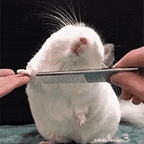Caustic
linked acrostics and other curios
Our acrostic golden shovel project has proven popular, but we don’t want you to keep writing in the same form forever—there’s so many more to try. (If you don’t believe us, check out Poetry in Form.)
So we’re inviting the poets of Medium to try something new: linked acrostics and other curios.
Linked Acrostics
An acrostic poem has a not-so-hidden message: usually, the first letter of each line spells out a word or phrase. Poets can get tricky, though, so sometimes it’s the last letter, or the last letter read from bottom to top, or the fourth letter, or the first letter on the first line and the second letter on the second line and so on, or a combination of these. (See more variations at Poetry Magnum Opus.)
We’re using the word ‘link’ the way you’d expect online (not in renga): the poem is part of a hyperlinked web of derivative works, borrowing phrases and lines from other poems and building on those. This is a form of afflatus poetry, but that just sounds like I ate too much cabbage, so I’m calling it linked poetry.
So a linked acrostic is a poem that
- contains an acrostic message that has been borrowed from a phrase in someone else’s poem, OR
- contains an (original or borrowed) acrostic message and also contains words or phrases from someone else’s poem.
We encourage you to borrow from poems already in this project or other projects on Chalkboard, so more people find us. But you’re welcome to choose any source poems you like, so long as they are properly attributed.
Examples
In All The Things We Said, Charlie Sierra Bravo’s acrostic phrase is borrowed from a line in All Dreams Must End?
In my acrostic poem Desire’s Whispered Way, I took words from marika bianca’s longing, and placed them as the first word of the first line, second word of the second line, and so on. The acrostic message is original.
Submission guidelines
- Please prepare your poem as a new story (not a response) and submit it to Chalkboard as a draft.
- In your subtitle, tag any poets from whose work you borrowed elements, e.g. ‘an acrostic fib poem, after Tamyka Bell’
- To your subtitle, add [[TK: @Heath for Caustic]] so it comes to me, instead of the other editors. I’ll remove this before publishing.
- Single-space your poem. (It’s easier to read and highlight this way.) If you cannot single space it due to the suckage factor of the mobile app, indicate where spaces should be and I’ll try to single space it for you without making it one big chunk of text (unless that’s how you want it).
- We’re flexible on formatting, but you should use a combination of italics and bold type to make your acrostic stand out and highlight any borrowed words or phrases. (We’d prefer it if you don’t use drop caps.)
- If you include a picture, make sure it is correctly attributed with the artist’s name (or username) and a link to the source image.
- At the bottom of your poem, put a separator, then add:
This linked acrostic poem is part of Caustic: linked acrostics on Chalkboard. I’ve borrowed words from:
followed by an embed-link to each of the original poems you used. - Add the tag Caustic Linked Acrostic as your first tag, then add whatever other tags you like. These could be related to the theme of your poem or, if you’re stuck, try Poetry, Collaboration, or Acrostic.
- Now you’re ready to submit!
(a) If you’re a writer for Chalkboard already, just submit it to the publication as a draft.
(b) If you’re not yet a writer for Chalkboard, highlight anywhere on this post (right here, the one you’re reading!) to create a private note to me, and share a link to your draft; I’ll add you as a writer so you can submit your story. - That’s your part done! I’ll check your submission meets the requirements and then I’ll publish it.
- I’ll do my best to add your poem’s hyperlink to the source poem’s page, if the source poem is published on Chalkboard:
(a) If your source poem is part of this Caustic, I’ll find the specific borrowed phrase and hyperlink it to your poem, OR add a link to the bottom of the poem, OR both, depending on what works best for the source poem’s layout.
(b) If your source poem is part of a different Chalkboard project, I’ll add a link to the bottom of the poem.
Tam’s top tips for acrostics
- On Medium, your options are left-align or…oh, wait. Yep. So your acrostic will be easier to read if you use the first letter of each line.
- If your acrostic happens elsewhere in the poem, consider adding an image of your piece aligned in a way that shows it off. I like to make these in Canva, but you could just as easily use your word processing software and take a screen capture.
- Your message will be easier to read if you single-space your poem and break your stanzas between acrostic words.
- If you want your message to stand out, bolding those letters can help.
- For an extra challenge, consider combining your acrostic with other forms, or make up your own extra rules. A word of warning, though: refrain forms are very difficult to work with!
